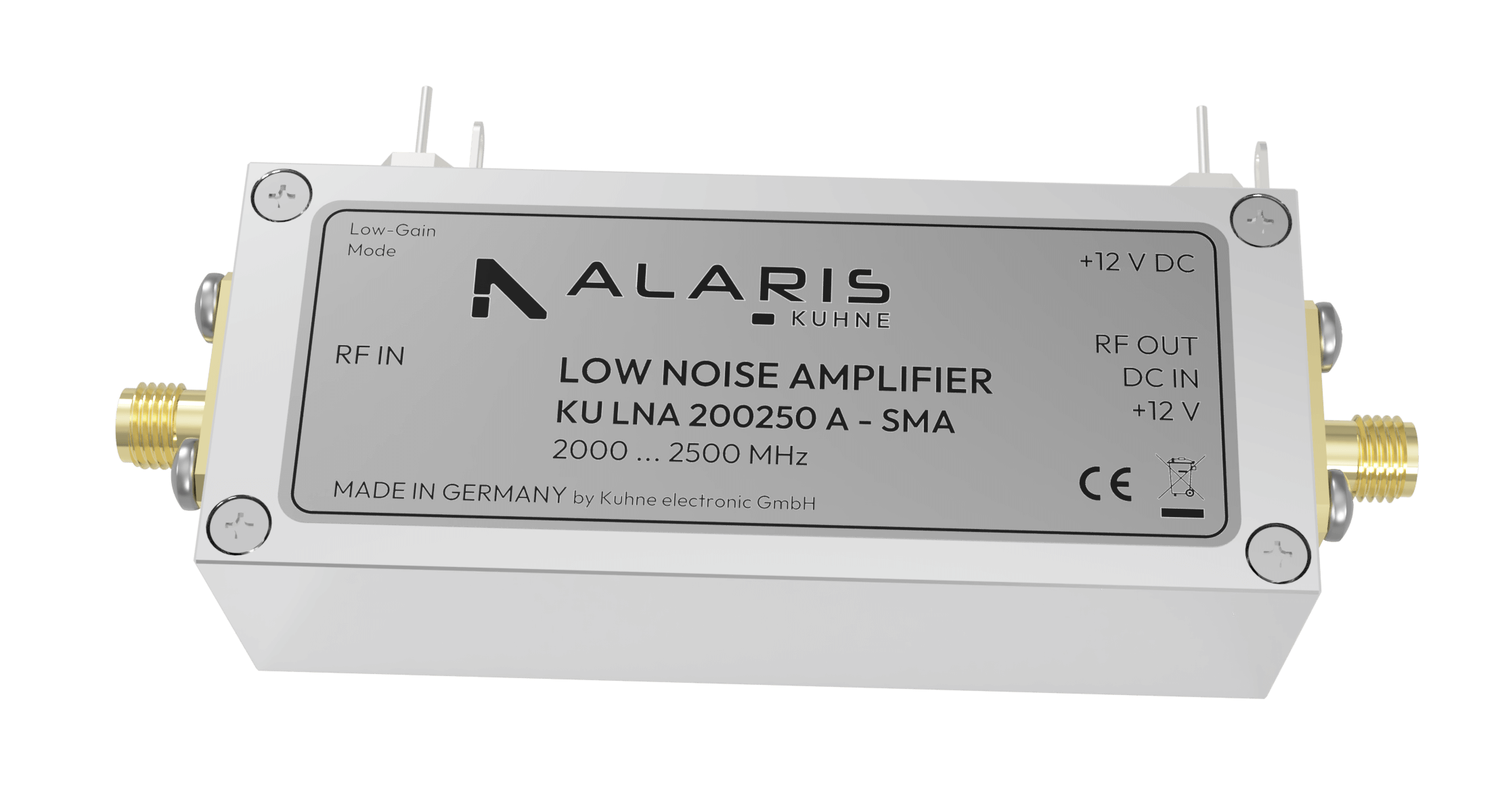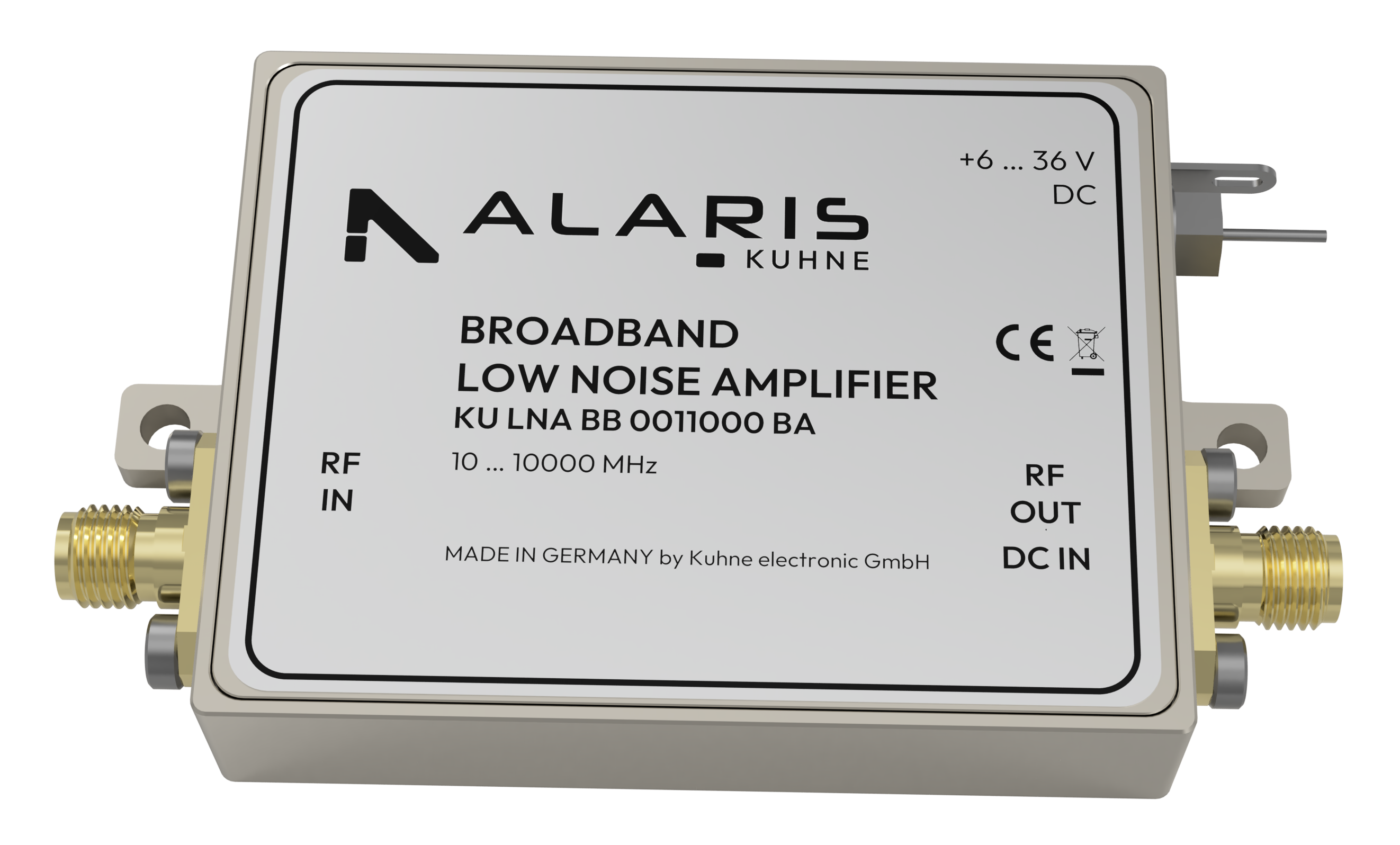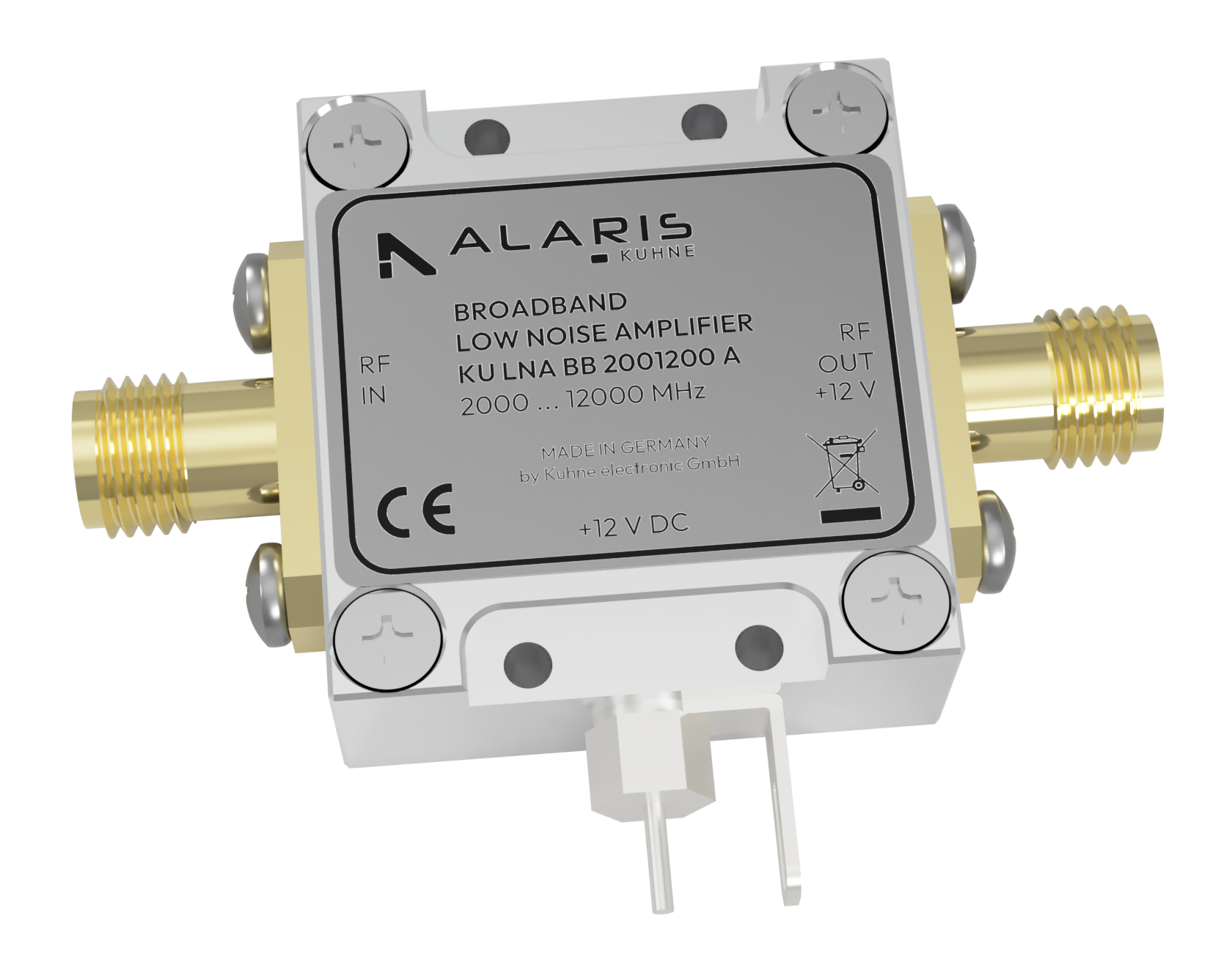

Super Low Noise Pre-Amplifier
KU LNA 200250 A - SMA
The super low-noise pre-amplifier KU LNA 200250 A was particularly developed by Kuhne for S-band receive applications; e.g.; satellite ground station equipment. The combination of an extremely low noise figure; high P1dB and IP3; and switchable low-gain mode ensures a very high dynamic range. The KU LNA 200250 A has a bandwidth of 2 GHz to 2.5 GHz and is thus suitable for a variety of applications in the S-band microwave range, in particular for the amplification of weak satellite signals in low-noise receivers. Furthermore, the KU LNA 200250 A is characterized by a very low noise figure of typ. 0.35 dB and a gain of typically 53 dB. By connecting the second solder pin to ground, the gain can be decreased to typ. 35 dB without affecting the noise performance. The reverse polarity protection furthermore increases user-friendliness.
Additional information
Product Data sheet
Download data sheetAdditional product downloads
No additional product downloads available.
Specifications
| Frequency range | 2000..2500 MHz |
| Noise figure @ 18 C | typ. 0.35 dB |
| Gain | typ. 53 dB in high-gain mode |
| Gain flatness | typ. +/- 3 dB in high-gain mode |
| Maximum input power | 10 mW |
| Output power (P1dB) | typ. +21 dBm |
| Output IP3 | typ. +35 dBm |
| Input return loss (S11) | typ. 12 dB |
| Output return loss (S22) | typ. 15 dB |
| Supply voltage | +9 ... 15 V DC |
| Current consumption | typ. 110 mA |
| Operating case temp. range | -40 ... +65 C |
| Dimensions (mm) | 73 x 30 x 22 |
| Weight | 110 g (typ.) |
- Telemetry
- Traffic monitoring
- Remote control
- Sensors
- Emergency response systems
- Spectrum surveillance
- RF Test Suites
- Airborne communication
- Spectrum Monitoring
- Source geolocation
- Radio Direction Finding
- Radio Monitoring
- COMINT
- Radio Direction Finding
- C-ESM
- SATCOM
- Secure Communications
- Point-to-point Communications
- Repeaters, extenders and boosters
- Point-to-multipoint Communications
- Low probability of interception
- Digital
- Wireless backhaul
Product Applications
Infrastructure Management
Test and Measurement
Avionics
Spectrum Management
Signals Intelligence
Communications
Broadcast
- Extremely low noise figure
Remote power supply via output connector possible
Low-gain mode via solder pin
Reverse polarity protection





